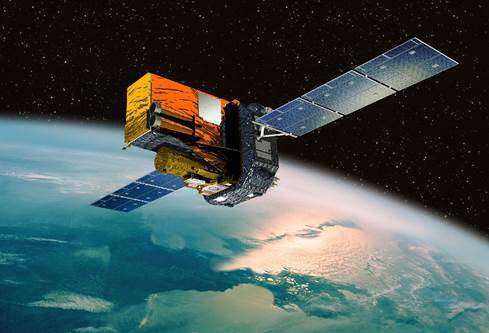How to get rid of a satellite after its retirement

Researchers at University of La Rioja (Spain) have developed a new method to eliminate artificial satellites in highly elliptical orbits when they finish their missions. The methodology, which reduces both cost and risk, has been tested with the European Space Agency INTEGRAL mission, which will re-enter the Earth's atmosphere and disintegrate in 2029.
Space debris presents one of the main challenges that aerospace engineers have to face, due to the danger it poses to satellites. In this context, members of the Scientific Computing Group (GRUCACI) at University of La Rioja have developed a method to eliminate satellites in highly elliptical orbits (HEO) when they finish their missions.
HEO orbits are very eccentric (the apogee can be ten times farther from the Earth than the perigee) and inclined (60 degrees or more with respect to the equator); their evolution is strongly influenced by the gravitational effects of the Earth's equatorial bulge and the pull from the moon and the sun.
Both effects can cause satellites placed in this type of orbit to cross two 'protected' regions (low earth orbits, LEO, and geostationary orbits, GEO) during long periods of time, thus increasing the risk of collisions with the numerous satellites operating in the same orbit. In addition, the probability of an uncontrolled re-entry into the lower layers of the Earth's atmosphere also increases.
"Our research has focused on taking advantage of the same gravitational effects that affect HEO orbits so as to reduce the cost of eliminating the satellites once they have reached retirement," Roberto Armellin, co-author of the work, explains to Sinc.
"Some propellant needs to be reserved in order to perform the satellite disposal manoeuvres, so it cannot be used to extend mission duration, which makes it more expensive. So we have developed a methodology aimed at reducing the amount of propellant needed, and hence the associated cost".
The researchers have undertaken their study, which they have published in the journal Advances in Space Research, as a mathematical optimization problem in which several objectives have to be simultaneously fulfilled, and they have solved it by means of an evolutionary algorithm -based on biological evolution-.
They have also used their own orbit propagator software, which is designed to simulate the evolution of an orbiter over 100 years in just a few seconds. This program finds the best conditions and time windows for satellites to re-enter into the Earth's atmosphere, where they can safely disintegrate with minimum risk to other satellites.
Validity of the method tested on INTEGRAL
In order to prove the effectiveness of their methodology, the researchers have applied it to the European Space Agency (ESA) INTEGRAL mission, an advanced gamma-ray space observatory launched in 2002.
"The simulation results suggest manoeuvres allowing the INTEGRAL satellite to re-enter the Earth's atmosphere and subsequently disintegrate during the period of time from September 2028 to July 2029, in a controlled way and with a cost which is reduced by the amplification of natural gravitational effects," Armellin says.
This solution coincides with the real strategy adopted by ESA to eliminate INTEGRAL, which has fired its engines four times this year so as to re-enter safely and with a reduced cost in February 2029.
The latest regulations of ESA regarding space debris require that if a satellite continues to cross the LEO protected region, it must re-enter into the Earth's atmosphere and disintegrate before 25 years. INTEGRAL will comply with these regulations, even though it was not obliged to due to its launch date.
The study of the GRUCACI team also proves that it is possible to select some latitude regions such that the satellite re-entry takes place with minimum risk to populated areas of the Earth.
More information: "End-of-life disposal of high elliptical orbit missions: The case of INTEGRAL". Advances in Space Research 56 (3): 479-493, August 2015
Provided by Plataforma SINC



















